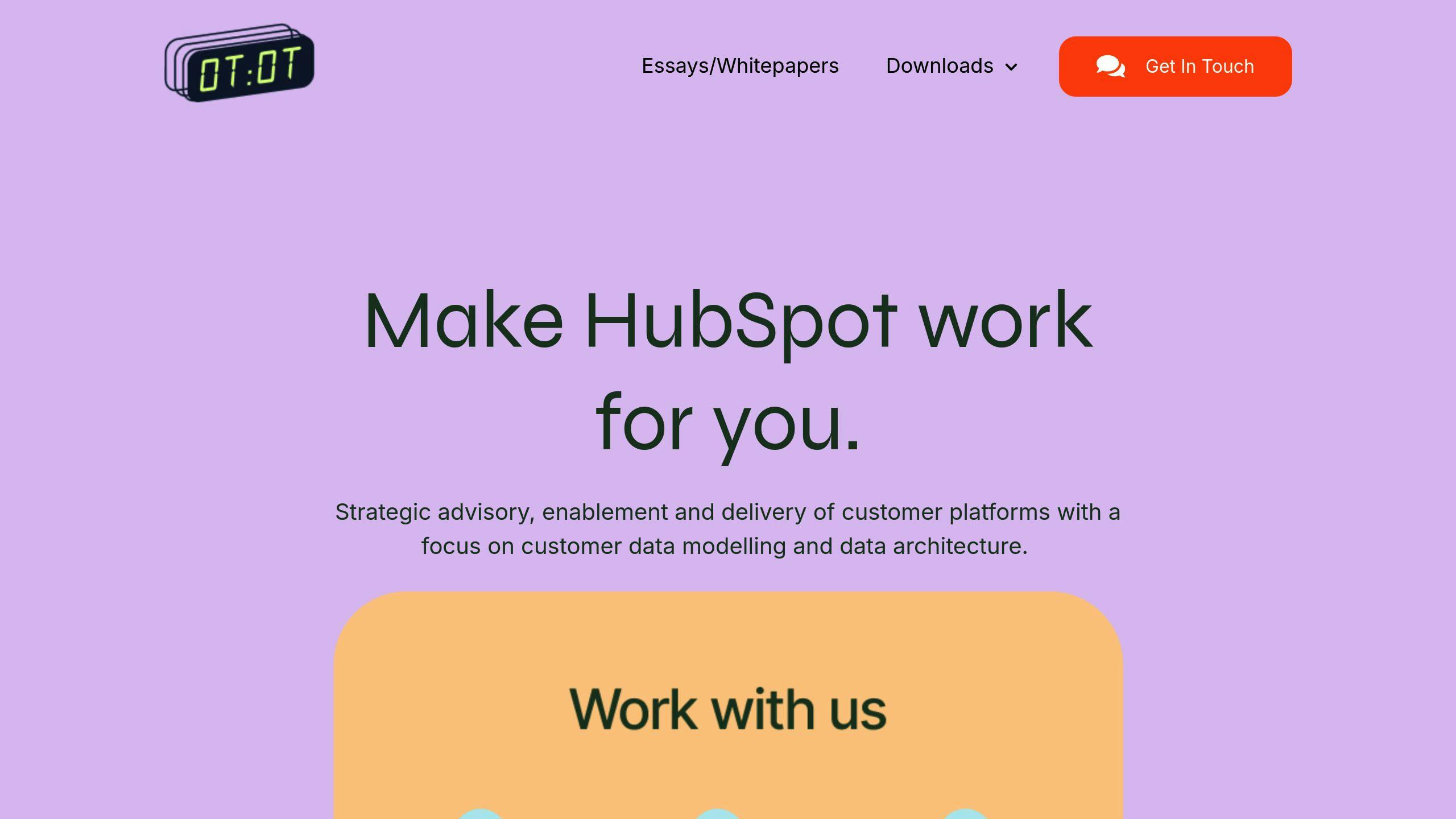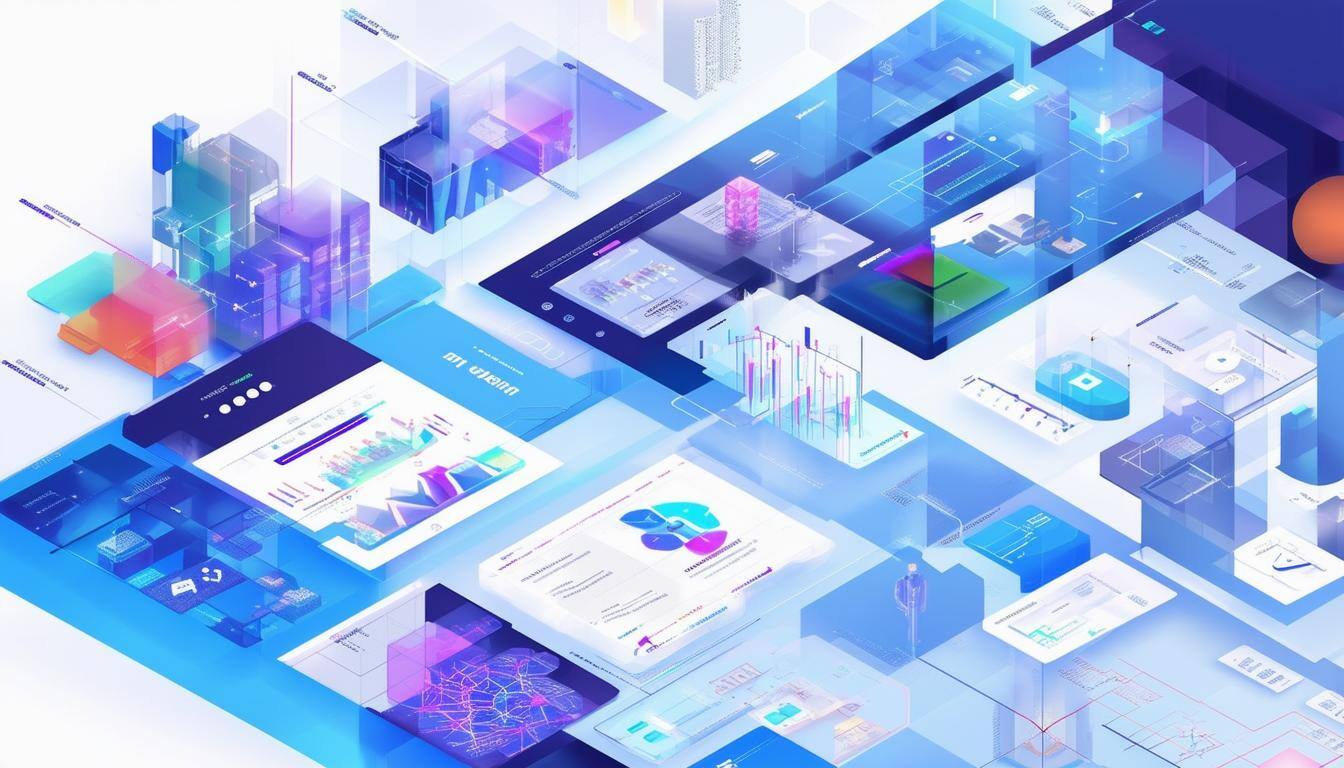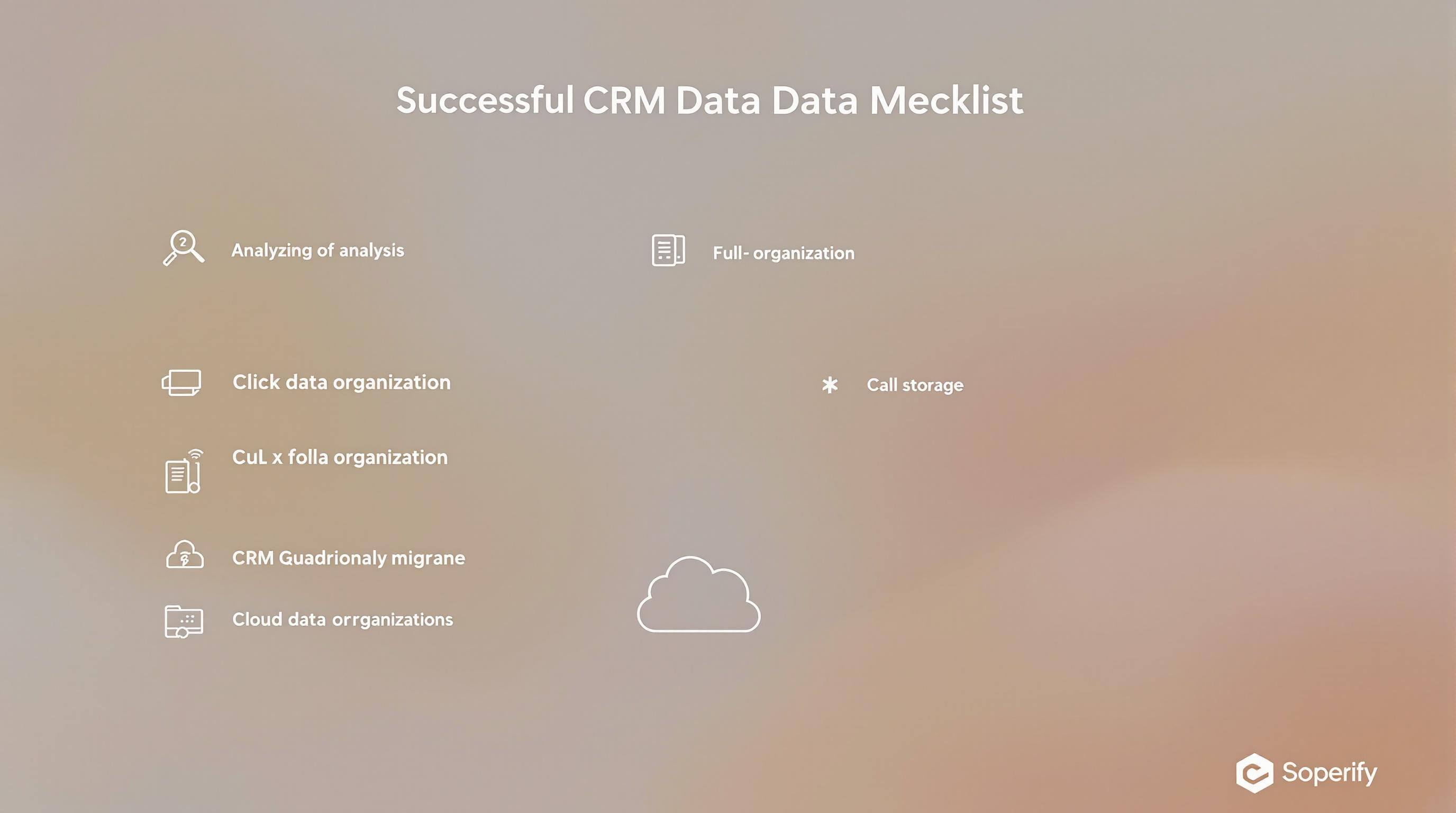Nourishing your data - why you need to provide context to your data
Adding context to your CRM data turns raw information into actionable insights. It helps you understand not just who your customers are, but why they act the way they do. This guide explores:
- What context means in CRM data and why it matters for decision-making.
- Types of CRM data: Identity, descriptive, and qualitative data - and how they work together.
- Practical steps to align data with business goals, customize models, and improve collaboration.
- Tools like HubSpot to enrich data, clean records, and unify customer profiles.
- AI’s role in predicting trends and automating insights.
Related video from YouTube
What is Context in CRM Data?
Context turns raw data into meaningful insights, helping businesses understand the reasons behind customer actions. It’s what transforms knowing a customer’s name into understanding their full journey with your brand. By adding context, raw data becomes actionable and relevant for decision-making.
Types of CRM Data
CRM data can be grouped into three main categories, each contributing to a better understanding of your customers:
| Data Type | Description | Business Use |
|---|---|---|
| Identity Data | Basic details like name and email for identification | Lays the foundation for recognising customers |
| Descriptive Data | Includes preferences, behaviours, and history | Supports personalised engagement strategies |
| Qualitative Data | Feedback and interactions revealing satisfaction levels | Offers insights into customer satisfaction |
Together, these categories create a complete picture of your customers. For instance, a bank could analyse transaction data alongside customer behaviour trends to allocate resources more effectively [2].
Context and Decision-Making
Data without context is just noise. Context allows businesses to interpret CRM data meaningfully, leading to better customer experiences and smarter decisions.
Here’s how context adds value:
- Combines different data types to create detailed customer profiles
- Enables personalised and relevant customer interactions
- Improves predictions about customer needs and future trends
For example, HubSpot's data sync feature integrates information across platforms, giving businesses a unified and consistent view of their customers [1]. To get the most out of CRM data, it’s crucial to maintain strong data governance and continuously enrich your data with context.
Next, we’ll dive into practical ways to integrate context into your CRM data systems.
How to Add Context to CRM Data
Aligning Data with Business Goals
Start by connecting your CRM data to your business objectives. Focus on collecting information that directly supports your goals - this ensures every data point contributes to better decisions.
For example, if your main goal is boosting customer retention, prioritize data that helps you understand customer behavior. Here's how:
| Data Category | Context Elements | Business Impact |
|---|---|---|
| Customer Interactions | Engagement frequency, preferred channels | Recognises engagement patterns |
| Purchase History | Transaction values, product preferences | Uncovers buying habits |
| Support Tickets | Resolution times, common issues | Pinpoints areas for improvement |
Once your data aligns with your objectives, the next step is organising it in a way that makes it actionable.
Customizing Data Models
With tools like HubSpot's custom objects, you can design data structures that match your unique business needs. Here's what to focus on when tailoring your CRM data:
- Map relationships between different data types to understand connections.
- Add custom properties to capture industry-specific details.
- Set up clear hierarchies to keep your data well-organised.
Collaboration across departments is essential during this process to ensure the model reflects a complete view of your operations.
Collaborating Across Departments
Each department offers a unique perspective on customer data. Marketing teams can share insights on campaign performance, while sales teams provide details about customer decision-making.
To make collaboration effective:
- Host regular cross-department meetings to address data gaps. Use these sessions to review current insights and identify areas needing more context.
- Standardise metrics and definitions to avoid confusion. Agree on shared terminology and consistent measurement criteria.
- Showcase real-world examples of how contextual data has improved decisions. Highlight successes, like better customer targeting or streamlined workflows, to encourage teamwork.
Tools for Better Data Context
HubSpot Tools for Data Context

HubSpot offers several tools to keep your data organised and meaningful. The Data Quality Command Center helps spot issues like duplicate or missing data, ensuring your records stay clean. With the Custom Object Builder, businesses can create data structures tailored to their unique needs. Together, these tools create a reliable system for maintaining accurate data.
Another standout is HubSpot's Data Sync, which connects customer data across apps. This ensures all touchpoints contribute to a unified view of your customer journey, making it easier to understand and act on.
| Tool Feature | Primary Function | Business Impact |
|---|---|---|
| Data Quality Command Center | Tracks data health and consistency | Cuts down errors by up to 40% |
| Custom Object Builder | Builds custom data models | Supports industry-specific tracking |
| Data Sync | Combines data from various sources | Delivers real-time updates |
Data Governance Framework
Assigning data stewards to oversee specific data categories ensures your data stays accurate and accessible. This structured approach helps maintain reliability and compliance.
"Data is only useful with context. For example, a date is just one day in the time continuum. But, if that data happens to be the day you were born, it has much more meaning." - ThoughtSpot [3]
Using metadata management - like adding timestamps or source details - makes it easier to track where data comes from and why it was collected. This transparency creates an audit trail that supports data integrity and adds valuable context.
Using AI for Data Insights
AI tools can take your CRM data to the next level by predicting customer behavior, spotting trends, and automating tasks like categorisation. These tools turn raw data into actionable insights, uncovering patterns and connections you might otherwise miss.
For example, OT:OT uses AI to help businesses fine-tune their HubSpot setup. By analyzing customer data with machine learning, they enable more personalized interactions and smarter decisions.
While AI is great for handling large amounts of data, human oversight is key to making sure those insights align with your goals. Companies like OT:OT show how combining AI-driven insights with contextual data can lead to better outcomes.
Case Study: OT:OT and Contextual Data

Here's a look at how OT:OT uses its tools to build CRM systems that go beyond the basics by incorporating rich contextual data.
OT:OT's Approach to Data
OT:OT focuses on upgrading standard CRM systems into scalable platforms by combining demographic, behavioural, and transactional data to build detailed customer profiles. Their method ensures data accuracy through bi-directional syncing, meaning any update in one system is instantly reflected across all connected platforms. This eliminates data silos. For example, syncing purchase data with marketing tools allows businesses to adjust campaigns in real-time based on customer buying habits.
How OT:OT's Services Make an Impact
OT:OT's strategies deliver clear, measurable results across various areas:
| Category | Impact | Results |
|---|---|---|
| Data Quality | Higher accuracy | Better consistency |
| Customer Insight | Unified customer view | A complete understanding |
| Decision Making | Smarter choices | Actionable insights |
| Scalability | Growth-ready systems | Future-proof solutions |
One standout example is OT:OT's work with a retail client. By applying their contextual data strategies, the client saw a 30% rise in customer engagement and a 25% increase in sales. This was achieved through personalised email campaigns powered by behavioural data insights, showing how targeted approaches can drive real results.
OT:OT Plan Options
OT:OT provides tailored solutions through three service tiers, offering flexibility for different business needs:
| Feature | Basic Plan | Premium Plan | Enterprise Plan |
|---|---|---|---|
| Data Integration | Standard sync | Advanced modelling | Custom data structures |
| AI Capabilities | Basic insights | Predictive analytics | AI-driven insights |
| Scalability | Limited | Moderate | Extensive |
| Customisation | Basic templates | Industry-specific | Fully customisable |
| Technical Support | Standard | Priority | Dedicated team |
For businesses aiming to fully leverage their data, the Enterprise plan offers the most advanced framework. By focusing on context, OT:OT helps transform disconnected data into actionable insights, aligning with the best practices in CRM data management.
"Data is only useful with context. For example, a date is just one day in the time continuum. But, if that data happens to be the day you were born, it has much more meaning." - ThoughtSpot [3]
OT:OT's results highlight how contextual data can reshape CRM systems, providing a roadmap for businesses looking to make their data work harder.
Wrapping It Up
Key Takeaways
Adding context to CRM data turns simple customer details into useful insights, enabling smarter decisions and improved customer interactions. By linking data points in meaningful ways, businesses can unlock more value from their CRM systems.
HubSpot’s data sync tools play a critical role in bringing together customer data from different platforms, ensuring it stays accurate and consistent. OT:OT’s success shows how well-contextualized CRM data can boost customer engagement and drive stronger sales results.
| Focus Area | Effect | Business Benefit |
|---|---|---|
| Detailed Customer Profiles | Consolidated data sources | Tailored customer outreach |
| Team Collaboration | Standardised data sharing | Smoother workflows |
| AI Insights | Automated trend identification | Enhanced customer support |
How to Get Started
Ready to take action? Here are three steps to improve your CRM data strategy:
- Review your data to spot gaps or missing context.
- Establish clear processes to maintain data accuracy.
- Leverage HubSpot tools for seamless data synchronisation.
HubSpot’s tools simplify these steps, helping you ensure your CRM data stays relevant and supports your business objectives. Keep in mind, contextualising CRM data isn’t a one-time task - it’s an ongoing effort that needs regular updates and fine-tuning.
CRM’s future lies in meaningful data. Start today to create standout customer experiences and stay ahead of the competition.
FAQs
What is the context of the data?
Data context refers to the background and details that give CRM data its meaning. In systems like HubSpot, understanding this context is crucial for gaining insights and improving customer interactions.
Key aspects of data context include:
- Where the data comes from and how it was collected
- The subject and scope of the data
- Time-related details, like timestamps or update frequency
- Geographic or system-specific information
- The purpose behind the data and its alignment with business goals
- How the data was collected and the standards used
How to Maintain Data Context
- Track metadata to document data origins and relationships
- Set up governance frameworks to ensure accuracy
- Perform regular audits to validate and update data
Frequent audits and validation ensure your CRM data remains useful and actionable. By following these steps, businesses can keep their data context intact, leading to smarter decisions and more effective customer engagement.
With a clear understanding of data context, you’re ready to dive into tools and strategies to manage it effectively.


